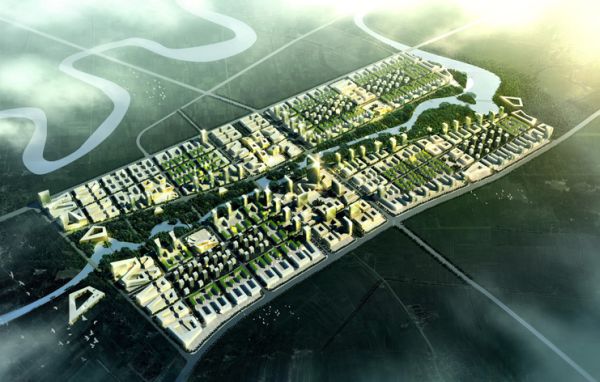
KSP Jürgen Engel Architekten International‘s architectural plan for the upcoming Science and Technology City in Qingdao has bagged the first position. Qingdao is a city that prospers both industrially and economically – with an exponential growth in the past few years – hence has the highest quality of life among other Chinese cities. With economic growth comes a steep rise in population and this has created a considerable demand for residential locations within the city with a sound support system. KSP’s design not only fits the bill for having a well-laid out plan that balances both residential and commercial aspects – but it will do so in a sustainable and eco-friendly manner.
The site of the project would cover 600 hectares and the deign by KSP divides the Qingdao Science and Technology City into four distinct quarters – leisure, shopping, commercial and residential with a high-rise center, The building that surround the city center would be low-rise (not more than 5 storey high), whereas the smaller number of luxury multistorey buildings will be concentrated around the center. Each group of residential buildings will be grouped with common areas in order to foster socializing amongst the residents. There will also be a park that will stretch along either side of the river.
KSP believes that it is vital to accommodate the growing population in a very skilful and planned manner without harming our natural surroundings. Hence, sustainability is the keyword for further development and KSP has designed the project keeping that in mind. There is a provision for optimum rainwater harvesting and recycling the same; there would be a special provision for pedestrians and the buildings would be powered with renewable energy alternatives. Eco-friendly cities and satellite cities that are planned in a sustainable fashion would definitely help in decreasing the amount of damage that urbanization causes and the Science and Technology City in Qingdao would most certainly do that.




